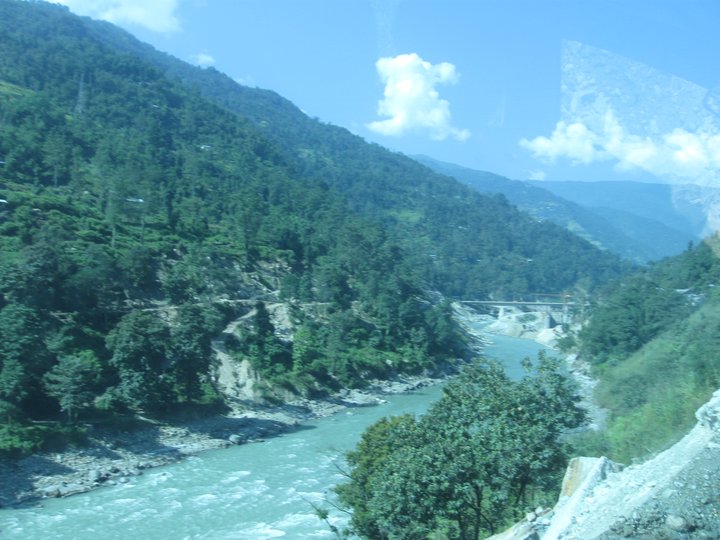
WANDERLUST Sea Nile Photo : M K Paul Samsara Mansarovar
Nile river is the world’s longest river. It is located in northeastern Africa. It originates from south of the Equator and flows towards the northeast Africa to drain into Mediterranean Sea. It was considered as source of life by ancient Egyptians and has played a vital role in the country’ s history. It has length about 4,132 miles. Its basin includes parts of Tanzania, Burundi, Rwanda, The Democratic Republic of the Congo, Kenya, Uganda, South Sudan, Ethiopia, Sudan and cultivated part of Egypt.
The name Nile is originated from word Greek Neilos, meaning a valley or river valley. It is located about 18-degree to 20-degree North latitude. The river flows from two separate sources: the White Nile from equatorial Africa and Blue Nile from Abyssin highlands. White Nile is considered to be headwaters stream and Blue Nile is the source of the most of water of Nile downstream containing 80% of water and slit. It begins at Lake Victoria and flows toward Uganda and South Sudan. The Blue Nile begins at Ethiopia.
The Nile gives two branches which drain into Mediterranean- the Rosetta branch to the west and the Damietta to the east forming the Nile Delta. Thus, the country Egypt is called as “Gift of Nile”.
The Nile played a vital role. It is a process which started about five million years ago when the river began to flow northwards into Egypt. Permanent settlements gradually rose along the banks of the river at beginning of 6000 BCE and this was the beginning of Civilization and Culture. It became the world’s first recognizable nation state by 3150 BCE. No area within the Nile River experiences an equatorial or a Mediterranean type of climate.
The Nile basin in Sudan and Egypt is rainless during the northern winter while its southern parts and the highlands of Ethiopia experience heavy rain which is more than 60 inches during the northern summer. Most of the region falls under the influence of the northeast trade winds between October and May months which causes the prevailing aridity of most of the basin. Tropical climates with well distributed rainfall are found in parts of the East African Lakes region and southwestern Ethiopia. The ancient Egyptians cultivated wheat, flax and Papyrus near the Nile.
The Nile River played an important role in shaping the culture and history of people. They constructed devices like shadoofs and sakias to lift water from the river and distribute it to the fields. This river provides fertile soil and water for irrigation. The annual flooding of the Nile replenished the land with Nutrient rich sediment leading to agricultural practises and growth of crops. The abundance of water and fertile soil allowed ancient peoples to cultivate crops such as wheat, barley and flax. Crop rotation was another agricultural technique practiced by ancient people.
Farmers could prevent soil depletion and maintain soil fertility by alternating the crops that grow in particular area and this practise contributed to overall sustainability and productivity of agricultural system. It served as transportation route that enabled trading and communication. It played an important role in African culture and religion. Festivals and rituals held to honour the rivers life giving waters and the architecture of ancient Africans often located near Nile. It is important in generating electricity.
This river also faces challenges for its future sustainability including climate changes. The Nile River played and important role as transportation route and facilitated the movement of people and goods. The peoples were skilled in boat and ship buildings. The boats were essential for trade, communication and exploration of new territories. These goods include vegetables, fish, bread and wood. Nile served as lifeline, connecting cities and growth of urban areas. It made easier for transportation large limestone blocks and other materials which were used in monumental structures.
The Nile has an impact on North Africans culture and religion. People considered Nile as a sacred river and attributing divine qualities to its life-giving waters. The river played role in spiritual beliefs and influencing cultural practises. The land of North Africa near Nile is divided into black land and red land. The Black land symbolizes the fertile Nile Valley associated with prosperity and abundance.
The Red land symbolizes the deserts that surrounds the river. People believed that flood water were results of divine interventions. Festivals and rituals celebrated rivers abundance. It was believed that the Osiris, one of the deities considered as God for symbolization of death, rebirth and cycle of Nile floods. Temples and tombs were constructed near Nile
Nile River stands as a symbol of cultural significance as it serves as lifeline for millions of people in north Africa. It uprises economy of the countries carrying this river. It carries the historical importance make it a subject of fascination and admiration. Basins of this river maintains the magnificent ecosystem for both flora and fauna.
By: Srutimayee Padhy
Write and Win: Participate in Creative writing Contest & International Essay Contest and win fabulous prizes.


